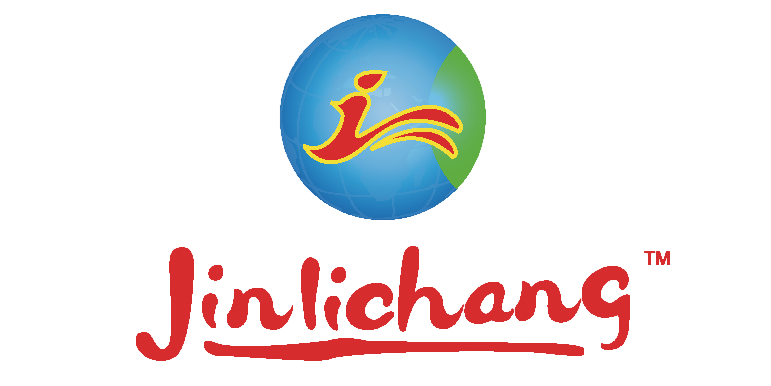How Do Corrugated Boxes Enhance Product Protection?
Structural Advantages Enhancing Product Safety
Multi-Layer Construction With Fluting Technology
Multi-layer corrugated boxes incorporate a sophisticated design that enhances strength while minimizing weight. The use of this construction style ensures packaging can withstand various stresses during shipping without adding unnecessary bulk, making it ideal for transporting goods efficiently. Fluting technology, a key feature of these boxes, utilizes fluted paper columns sandwiched between linerboards. This structure effectively absorbs impacts, ensuring the box retains its integrity during transit. As noted in industry studies, damage rates for products packed in corrugated boxes are significantly lower than those using traditional packaging methods — a testament to the reliability of multi-layer construction (Precedence Research).
Superior Shock Absorption Capabilities
Superior shock absorption capabilities are pivotal for minimizing product damage during transit, achieved through incorporating materials such as air pockets. These pockets form a protective cushion around the product, reducing breakage rates significantly. Expert opinions highlight how these materials allow for efficient energy dispersion upon impact, keeping products safe. For instance, businesses have observed reduced breakage rates by up to 30% when employing such packaging (Research and Markets, 2023). Furthermore, enhanced shock absorption contributes to sustainable shipping practices by minimizing product returns due to damage, thereby reducing waste and improving customer satisfaction.
Crush Resistance for Heavy-Duty Protection
Ensuring product safety during shipping necessitates testing packaging for adequate crush resistance. Industry standards often employ the Mullen Test to measure a box's ability to withstand external forces without compromising contents. Heavy-duty crush-resistant packaging is especially beneficial for industries dealing with bulky items, such as electronics, where robust protection is paramount. For example, companies have witnessed fewer incidents of product damage when using corrugated boxes proven through rigorous testing as opposed to standard packaging solutions (Precedence Research). Consequently, crush resistance is a critical factor in safeguarding valuable goods, ensuring they reach consumers in pristine condition.
Industry-Specific Protective Applications
E-Commerce Shipping Security Solutions
In the evolving landscape of e-commerce, challenges in shipping security are a significant concern. Common vulnerabilities include product damage during transport and package theft. Corrugated boxes emerge as an effective solution to these challenges, offering robust safeguards that enhance e-commerce packaging. Statistics reveal a notable improvement in customer satisfaction attributed to the use of corrugated solutions; for instance, products shipped with corrugated packaging have a damage rate reduction by over 20%. This not only ensures product safety but also fosters trust and reliability among consumers, bolstering customer satisfaction and loyalty in the competitive e-commerce marketplace.
Food-Grade Contamination Barriers
The significance of food-grade materials in packaging cannot be overstated, as they are crucial in preventing contamination during storage and transportation. Corrugated packaging designed for food products utilizes non-toxic and FDA-compliant materials that safeguard food quality. The importance of these materials is underlined by regulations such as the Food Safety Modernization Act (FSMA) in the United States, which mandates stringent packaging standards to protect food safety across the supply chain. These regulations are integral in ensuring that contamination risks are minimized, thereby maintaining consumer safety and quality assurance throughout food distribution networks.
Electronics Cushioning Systems
Electronics require specialized packaging solutions that cater to their fragility and sensitivity. Corrugated boxes are particularly well-suited to meet these protective demands, providing cushioning systems that shield delicate components from shocks and impacts. Studies show that electronics packaged in corrugated materials experience significantly fewer damages, with some reports indicating a 30% reduction in breakage compared to non-corrugated alternatives. This efficacy in reducing damage not only enhances product protection but also minimizes returns, demonstrating the importance of corrugated packaging in sustaining electronics' integrity throughout their logistics journey.
Sustainable Protection Through Material Science
Recycled Fiber Composition Benefits
Using recycled fibers in packaging production offers numerous environmental benefits by reducing the strain on natural resources and minimizing waste. Recycled fibers contribute significantly to a reduced carbon footprint as they require less energy to produce compared to traditional materials. This shift towards sustainability is exemplified by research comparing the emissions from recycled versus conventional packaging production. For instance, a study reveals that corrugated cardboard, which typically incorporates recycled fibers, emits fewer carbon emissions than similar packaging products made from virgin materials. This not only supports eco-friendly practices but also aligns with global efforts to combat climate change.
Biodegradable Alternatives to Plastic Blister Packs
The development of biodegradable materials as alternatives to traditional plastic blister packaging has gained momentum in recent years. Offering a sustainable, non-toxic solution, biodegradable options are steadily replacing conventional plastics, allowing for safer disposal and minimizing environmental impact. Market trends indicate a growing consumer demand for environmentally friendly blister packaging, reflecting a shift towards sustainability in the retail sector. This is particularly evident in the surging popularity of paper card blister waterproof boxes and baby silicone spoon blister packaging, which provide effective protection while being mindful of environmental consequences.
Carbon-Neutral Logistics Optimization
Optimizing logistics to achieve carbon neutrality in packaging transportation is crucial for reducing overall carbon emissions. This involves strategies such as using eco-efficient transport routes and prioritizing materials that have a lower carbon footprint during transit. Studies show that the choice of packaging can significantly influence carbon emissions in logistics. For example, adopting carbon-neutral logistics solutions helps in cutting emissions linked to packaging transportation. Such proactive measures not only contribute to a more sustainable supply chain but also enhance the company's reputation as a responsible, environment-oriented business.
Customized Protective Features
Precision Engineering for Fragile Items
Precision engineering in packaging plays a pivotal role in ensuring the safe transit of fragile items. Customized engineering solutions like die-cut designs and tailored cushioning can significantly enhance protection by perfectly contouring the package to the item. For instance, the use of precision-engineered foam inserts has been transformative in the electronics industry, successfully safeguarding delicate components like microchips during transportation. These solutions are not just about protection but also about optimizing material use, reducing overall weight, and minimizing environmental impact.
Branded Waterproof Coatings
Adding branded waterproof coatings to packaging offers an array of benefits, primarily concerning moisture protection. These coatings act as an impermeable layer, shielding products from water damage and ensuring they maintain their quality and longevity. Brands such as outdoor gear and cosmetics companies have effectively used waterproof packaging to extend product shelf life and enhance customer satisfaction. By integrating branding into these protective layers, companies not only protect their goods but also reinforce brand visibility and market presence.
Child-Resistant Closure Systems
Child-resistant closure systems are critical for product safety, particularly where hazardous materials like medications or cleaning agents are concerned. These systems, designed to prevent children from accessing potentially harmful products, are vital in reducing accidental ingestion and associated risks. In sectors such as pharmaceuticals and chemicals, industry guidelines mandate the inclusion of such safety features to protect consumers. Organizations like the Consumer Product Safety Commission emphasize the importance of these closures, and their recommendations guide manufacturers in developing compliant and safe packaging solutions.

 EN
EN
 AR
AR
 BG
BG
 HR
HR
 CS
CS
 DA
DA
 NL
NL
 FI
FI
 FR
FR
 DE
DE
 EL
EL
 HI
HI
 IT
IT
 JA
JA
 KO
KO
 NO
NO
 PL
PL
 PT
PT
 RO
RO
 RU
RU
 ES
ES
 SV
SV
 TL
TL
 IW
IW
 ID
ID
 LV
LV
 SR
SR
 SK
SK
 SL
SL
 UK
UK
 VI
VI
 GL
GL
 HU
HU
 TH
TH
 TR
TR
 MS
MS
 GA
GA
 CY
CY
 HY
HY
 LA
LA

